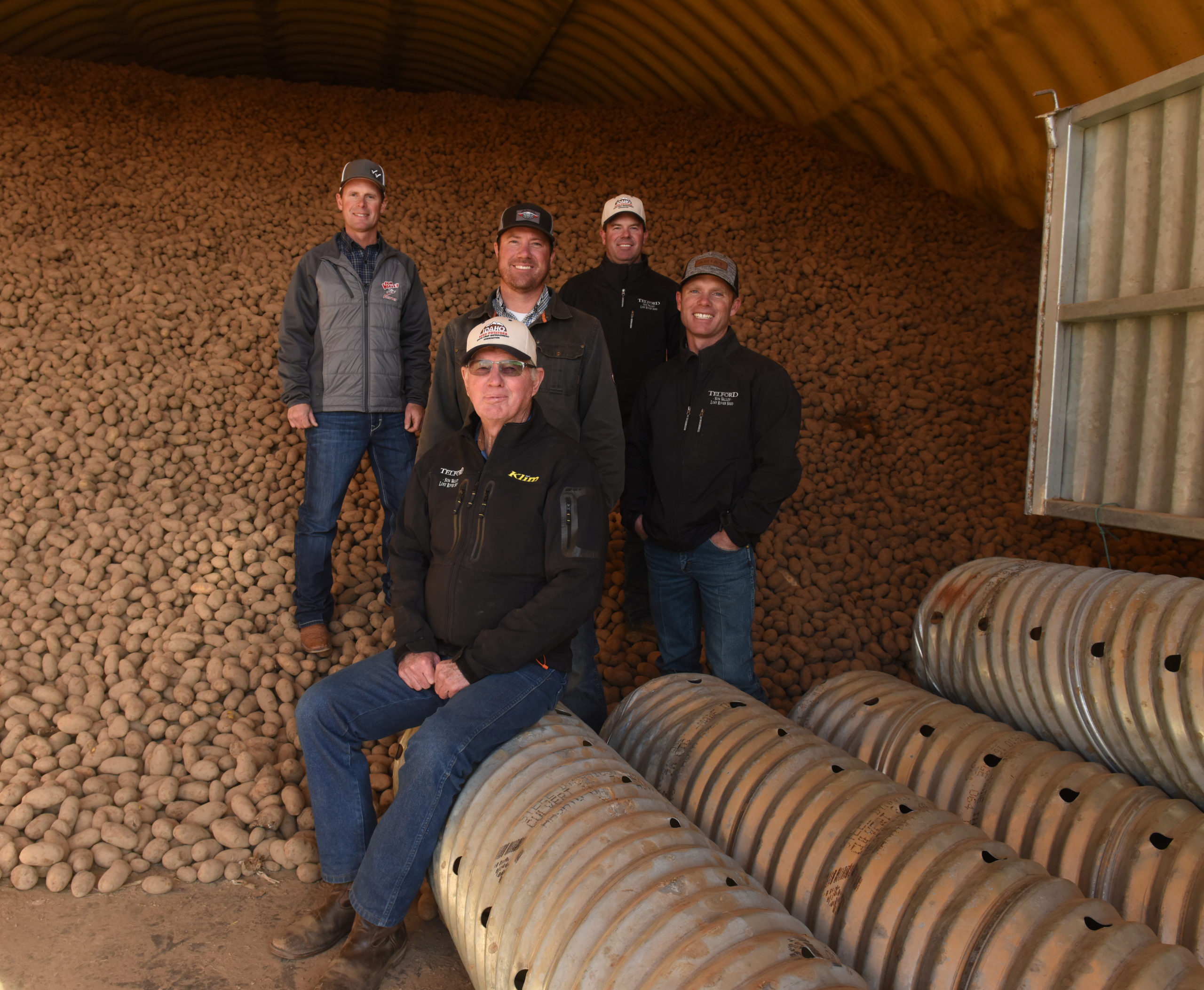Buffer zones could lead to new application techniques
EPA’s Reregistration Eligibility Decision for metam sodium is due out in July, and the decision could have drastic repercussions for potato growers in the Pacific Northwest. Metam sodium, a broad spectrum fumigant used to control verticillium and some nematodes, converts to the gas methyl isothiocynate (MITC) when it is applied to soil through irrigation systems.
Under the current re-registration documents, EPA is proposing risk mitigation measures that include buffer zones up to 875 feet at 500 feet nearly 50 percent of the fields in Washington would be affected, said Chris Voigt, executive director for the Washington State Potato Commission. Three-quarters of Washington fields are treated with metam sodium, so the economic impact of buffer zones would be almost $75,000 of lost farmgate value per field and $371,000 a field of lost economic value. Across the entire state, that would amount to $77 million in lost farmgate value and $383 million in lost economic activity for the state, Voigt said.
The regulatory attack on metam sodium didn’t come as a surprise. To address the issue, Vince Hebert with the Washington State University Food and Environmental Quality Lab started working on the issue in 2005, attempting to answer the questions: Is there a problem, and is there anything that can be done about it?
In 2008, the lab started a near-field monitoring program in south Franklin County, near the cities of Pasco, Kennewick and Richland, Wash. The area is a high agricultural area that produces early harvest potatoes, and it’s also one of the most rapidly expanding residential and commercial areas in the state, Hebert said.
The study used air monitoring sensors at seven sites in western Pasco. Growers in the area primarily apply metam sodium through high-pressure irrigation systems, but there has been some adoption of low-pressure drop lines, Hebert said. The study will provide the first specific data for the Pacific Northwest, Hebert said, which will help EPA’s RED mitigations. The re-registration information that EPA has been using has all come from California data.
Air sensors recorded samples every 12 hours from Sept. 5 to Oct. 25. For the most part, the MITC levels did not reach EPA’s level of concern of 22 parts per billion the 10X level for EPA’s no-effect limit of 220 ppb. During the week before irrigation cutoff the sampling rate was increased to six samples a day, one every four hours. Two sites recorded levels approaching EPA’s no-effect level of 220 ppb on just one day. Oct. 17 was a warm day 72 F and the air was calm, but after sundown the temperatures dropped quickly, Hebert said.
While levels of MITC were mostly low during the season, and even during the week before irrigation cutoff when applications are highest, the drift on that one day could complicate matters for growers. The Washington State Department of Agriculture conducted its own case study on metam sodium and MITC in the air, and happened to do so on the same day high levels were recorded.
Washington State University has been looking at ways to keep emissions down, and some of the results are promising, Hebert said. But more research is needed into the health risks of MITC, how exposure can be limited and whether reduced emissions applications can effectively control nematodes and verticillium, he said. Regional MITC field emissions studies also would help.
Two new technologies are being looked at to reduce the off-field emissions of MITC. Simply adding drops and running lower pressure would reduce but not eliminate the buffer zones, according to EPA. But work being done in Washington has shown promising results that have little to no emissions.
The first is a shank application developed by Jim Ossman with Western Farm Service. Metam sodium is applied nine inches into the ground using shanks. A test plot was monitored for air-borne MITC right next to site, and little to know emissions were detected.
Monte Spence, a commercial applicator with Windflow Fertilizer, is developing a second application technique that applies water-run metam sodium through a drizzle boom. Last season was the first time it was tried in a field, and the technique outperformed high- and low-pressure irrigation systems with fewer emissions. The system uses PVC pipe with holes that allow a steady stream of water-run metam sodium. The pipe, held about knee-high, is in essence a flood irrigator, Spence said. There’s little to no odor on-site, and it has other advantages. It may allow applicators to cut rates and it can be used in bad weather, which means fewer days shut down for wind.
I’ve run the drizzle boom in 30 mph winds without affecting the drizzle stream,” Spence said.
However, the soil has to be prepped prior to use, the soil typography has to be fairly flat and spans can be problematic, Spence said. But testing on a drizzle-boom-applied field found a 200 ppb MITC level right next to the field, but that dropped off quickly, Hebert said. That’s well below the estimates in EPA’s re-registration document, which should allow for smaller buffer zones.
There’s no doubt that metam sodium will be a restricted-use chemical, and that’s a good thing, said WSPC’s Voigt. But EPA’s risk mitigation measures currently put too much burden on growers through buffer zones, overlap restrictions, area use restrictions and re-entry into fields.
The RED amendments will be introduced this spring, said EPA’s Dirk Helder. Those will change as the communication continues, he said, but they will include some sort of buffer zone and a restricted-use registration. By fall of 2009 Helder wants to conduct a pilot program in the Pacific Northwest on a county- or large-grower basis, and then by 2010 or 2011 the amended metam sodium labels will likely be on the market.
Helder emphasized to growers at the Washington State Potato Conference in January that EPA wants to be workable with growers, and encouraged communication between the agency, industry and communities. He said EPA’s focus is on protecting neighbors, but he realizes the industry has to be able to function as well.”














